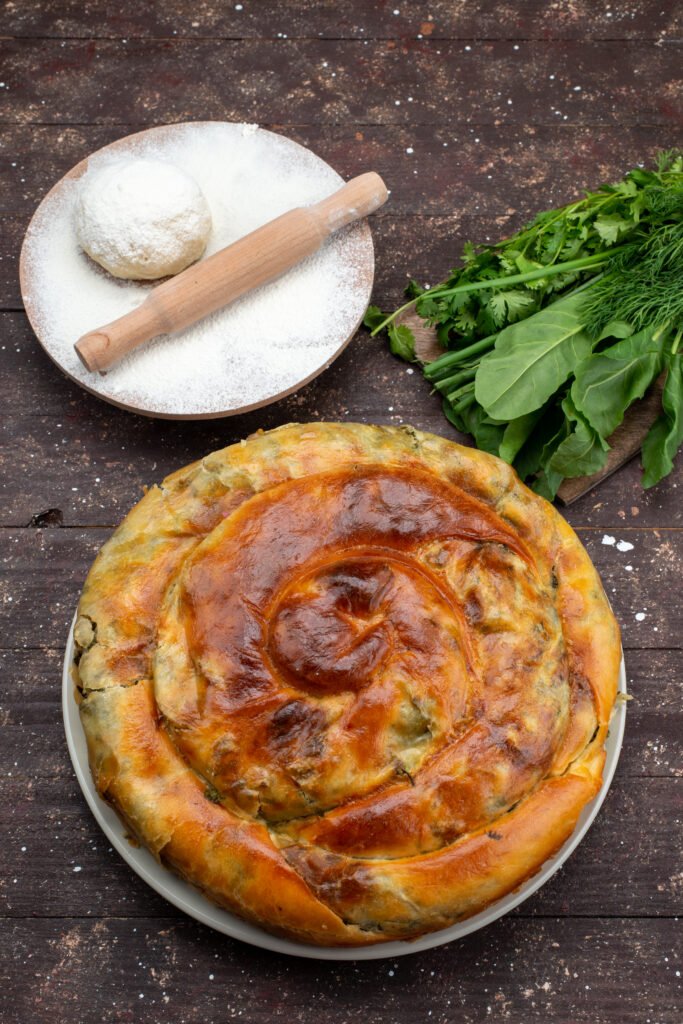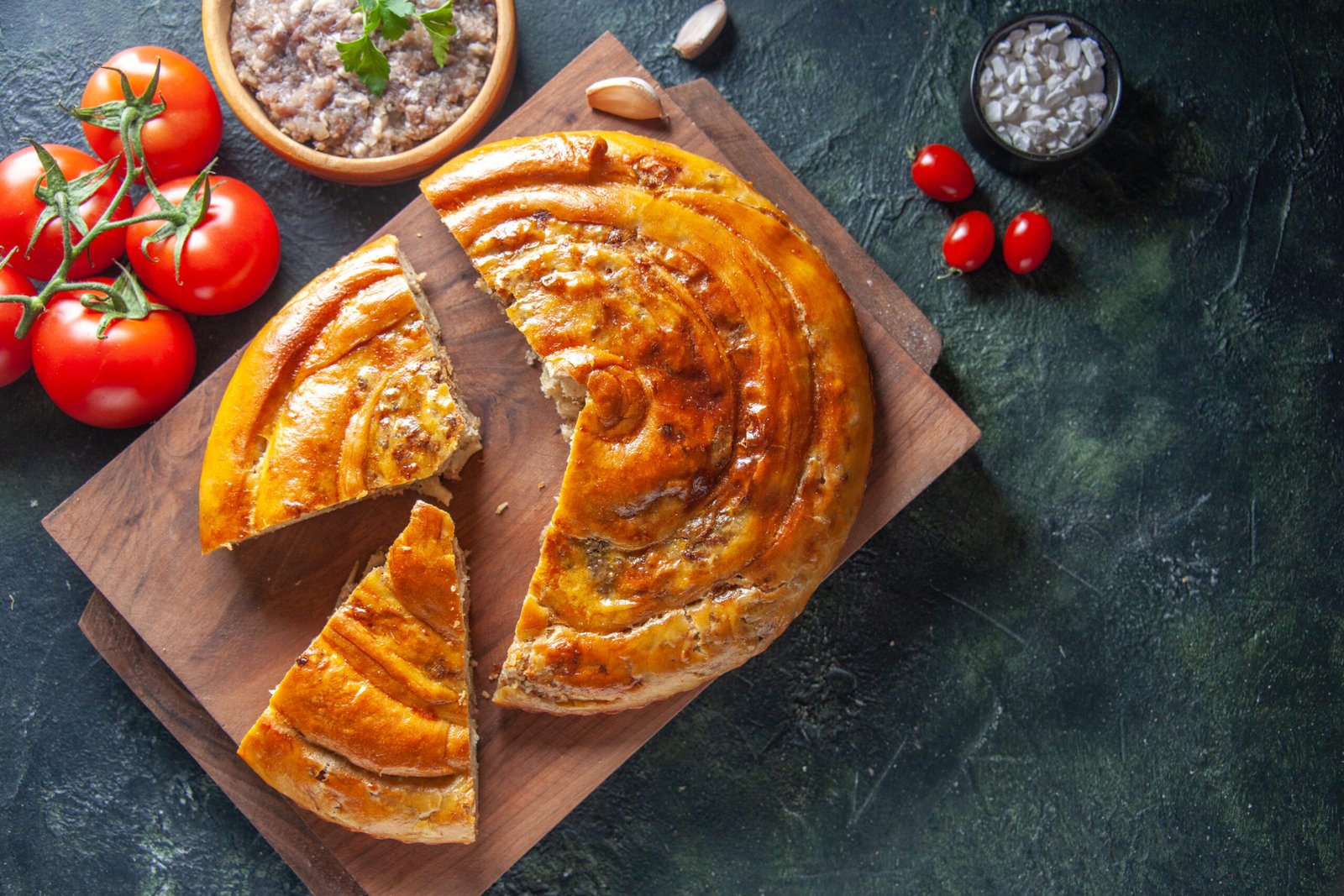Banitsa, banitza or banica – however you choose to spell it баницa is absolutely delicious! Flaky phyllo pastry cradling layers of gooey, salty sirene cheese, interspersed with a zingy tang from the Bulgarian yoghurt, I’m drooling just thinking about it!
There’s a reason that variants of this dish are so popular around Europe, from Tiropita in Greece to Burek in Bosnia, everybody wants a slice of this pie!
What is particularly fabulous about this recipe is that it is totally customisable. Once you perfect the basic banitsa recipe, feel free to experiment with other traditional fillings like cabbage, onion, potato and pumpkin. Or invent your own filling combinations, the flavour possibilities are endless!
Ingredients
5 eggs
450g or 16 sheets of phyllo dough (1-2 packets)
100g of butter (around 7 tablespoons)
350 grams of Sirene cheese (Bulgarian white cheese)
280 grams of Bulgarian yoghurt
1/2 a teaspoon of baking soda
Banitsa Recipe
Preheat your oven to 180°C (350°F). Line a large baking tray with greaseproof paper, and grease with butter to prevent the banitsa from sticking.
Start by making the filling. In a mixing bowl, begin by breaking your cheese apart with a fork until it resembles breadcrumb size pieces.
Whisk in your eggs, then the yoghurt and 1/2 a teaspoon of baking soda.
In a separate bowl, melt your butter until fully liquidised.
Now you can take the phyllo dough out of the fridge. Start by covering the phyllo sheets with a slightly damp towel as they dry up rather quickly.
Take one sheet of phyllo dough and brush it lightly with your melted butter. Stack a second sheet of phyllo and also glaze that with butter. Brushing every single phyllo sheet with butter ensures maximum golden deliciousness at the end.
Its time to start adding the filling! Spread a thin, even layer of your cheesy yoghurt mixture onto your phyllo layers. Top tip: When adding the filling, it is tempting to overdo it – but you need to allow yourself enough space so that you can still roll the pastry! Roughly 1-2 tablespoons of filling per layer is ideal.
Take one sheet of phyllo dough and brush it lightly with your melted butter. Stack a second sheet of phyllo and glaze with butter. Brushing every single phyllo sheet with butter ensures maximum golden deliciousness at the end.
Its time to start adding the filling! Spread a thin, even layer of your cheesy yoghurt mixture onto your phyllo layers. Top tip: When adding the filling, it is tempting to overdo it – but you need to allow enough space so that you can still roll the pastry! Roughly 2-3 tablespoons of filling per double filo sheet is ideal.
Top tip: When adding the filling, don’t dollop it on. A tablespoon or 2 per filo sheet spread around is plenty. You need to allow enough space so that you can still roll the pastry.
Tightly roll the pastry sheet into a long cylindrical snake shape. Then roll that piece into a spiral shape, coiling it around itself. Place the pastry on your baking tray.
Repeat step 7 and 8, buttering and filling your pastry layers, continuing to coil the pastry around itself.
Use the last of your butter to glaze the entire banitsa. Bake it in the preheated oven for around 30 minutes, or until the banitsa is golden brown and crispy on top.
Remove from the oven and allow it to cool for a few minutes before slicing and serving. Banitsa is typically served warm, but the leftovers are equally as delicious when eaten cold.

Substituting Banitsa Ingredients
Outside of Bulgaria, many of the regional products that make Banitsa authentic can be quite difficult to come by. So here is a useful list of alternative ingredients.
- Bulgarian yoghurt is completely unique, it is particularly renowned for being phenomenal for your gut microbiome. If you need to substitute it, I’d suggest Greek yoghurt as an alternative. The main differences are that Bulgarian yoghurt is slightly more sour, and a little bit more watery.
- While the melted butter adds an irreplaceable richness, you can swap it for an oil of your choice; like sunflower, rapeseed etc.
- Instead of Bulgarian sirene, you can use Greek feta. Sirene is slightly saltier, more tangy, and usually a little bit softer than feta.
Fun fact: In the Bulgarian language, sirene literally means “a cheese”. A true testament to how popular this cheese is!

